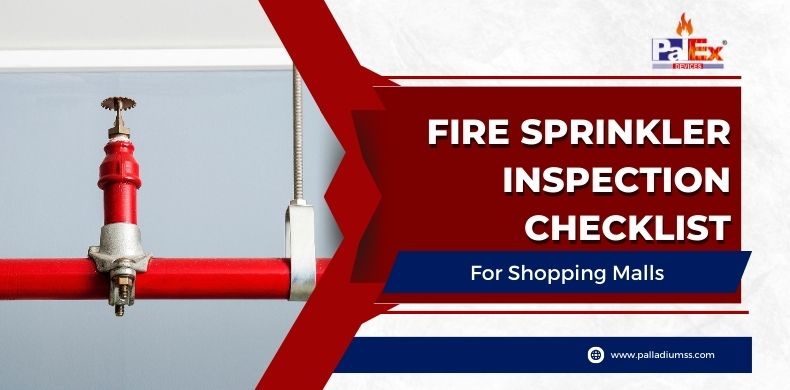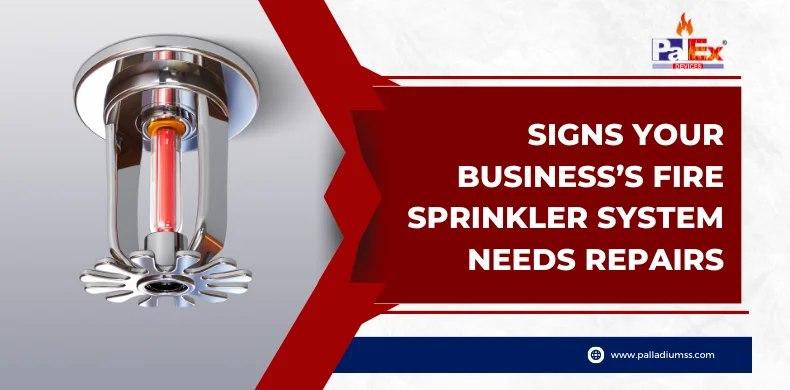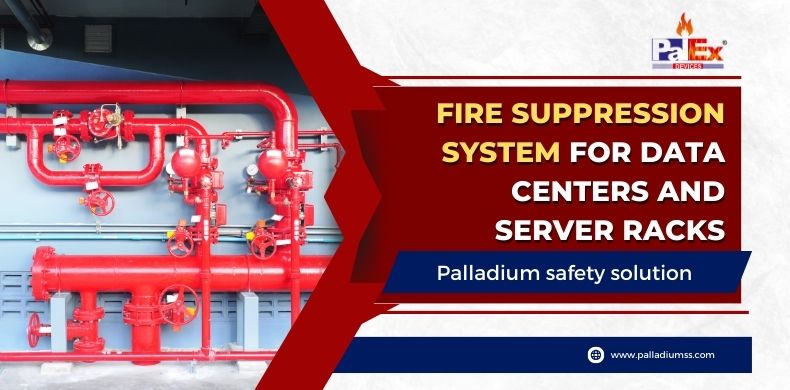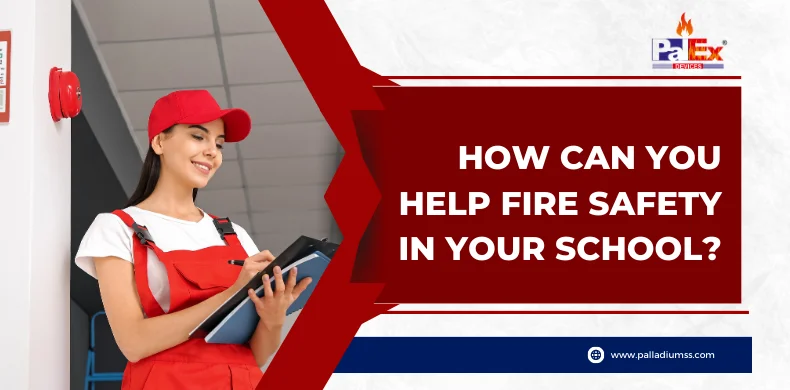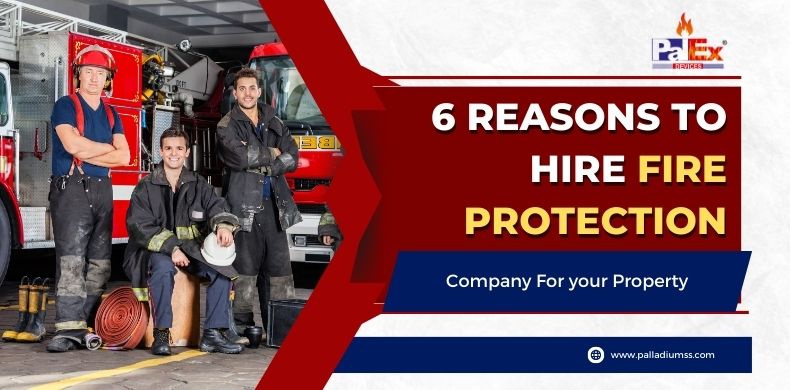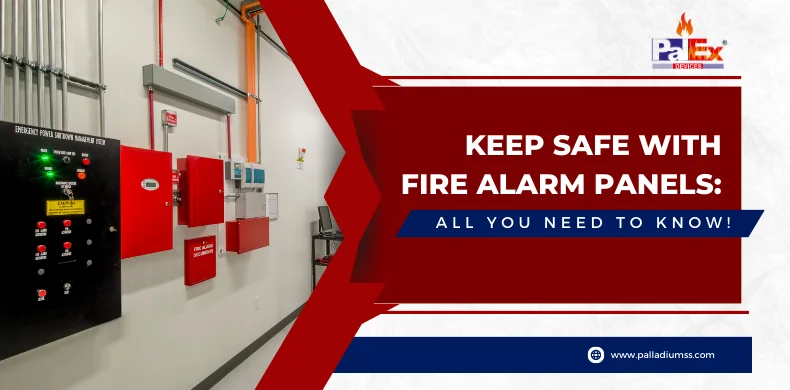Fire alarm panels are essential components of any fire safety system, and understanding what they are, the types available, and when they should be updated is key to maintaining a safe and secure property. This article will discuss a fire alarm panel, the types of fire alarm panels, how long they last, and the general problems associated with old fire alarm panels. Finally, we’ll look at the advantages of updating your fire alarm panel regarding
safety, longevity and cost.
What is a Fire Alarm Panel?
A fire alarm panel is the central control panel of a fire alarm system, responsible for detecting and messaging a fire alarm and connected to several manually operated and automatic fire sensors embedded in the property. The manufacturer’s manual shows the list of devices connected to the fire alarm panel. However, it can generally relate to various detection devices and other systems, such as building management or access control. They can also be connected to an existing fire hydrant system to allow for automatic shut-off of the hydrant should a fire be detected.
The Types of Fire Alarm Panels
There are three main types of fire alarm panels available: conventional / non-addressable
fire alarm panels, wireless fire alarm system panels, and analogue addressable fire alarm panels.
- Conventional / Non-addressable Fire Alarm Panels
These panels are ideal for smaller establishments such as single-story offices, homes, and stores that do not require complex control systems. They are relatively inexpensive to install and are self-sufficient in terms of programming, as they do not require complex communication protocols. The conventional systems generally use zone wiring and zone indicator light systems to indicate which zone within the building has set off the alarm.
- Wireless Fire Alarm System Panels
Wireless fire alarm systems are becoming increasingly popular as they offer an easier, more economical way to install fire detection systems in more significant buildings. These systems feature the same components as their wired counterparts but allow the user to programme the system wirelessly, eliminating the need for expensive cabling installation and the associated costs. The wireless system also makes maintenance and testing easier as wireless sensors can be located to cover otherwise challenging-to-reach areas such as attics and basements.
- Analogue Addressable Fire Alarm Panels
Analogue addressable
fire alarm panels are typically used in large buildings such as shopping centres or office blocks since they provide a complex control system that can be easily integrated with other systems. These systems often feature repeater panels and multiple detectors in each zone with addressable discs on the back of each circuit. Each sensor is programmed with a unique address, allowing the user to identify each one.
Fire Alarm Panels Don’t Last Forever
While fire alarm panels are designed to operate for several years, they still need to become obsolete over time as technology advances and regulations change. Most fire alarm panels have a life expectancy of around 10-15 years, and older systems may become less reliable due to worn-out components. It is also essential to remember that manufacturers often make changes to the fire alarm systems in terms of features, battery type and operating conditions as new regulations are introduced.
Problems with Old Panels
There are various problems related to launching a system that is not up to date. A few of these problems include:
Equipment that has reached the end of its life may not be able to detect new fires beyond its age. End-of-life products can often be difficult to source and much more expensive than a new system.
Safety Features Change
Industry standards and regulations surrounding fire safety are constantly changing, and older systems may need the safety features that a new system would. This means that a more senior panel may need to be able to provide the same level of protection as a more up-to-date system.
<
Fire Regulations May Increase
Regulations often change to reflect the realities of safety and thus influence the necessary fire safety upgrades. This could include installing additional detection devices or the need for broader coverage for more significant buildings.
Installing a new system can be expensive, as equipment and installation costs can be much higher than that of an older system.
- Compatibility Advancements May Be Less Than Satisfactory
Technology does not stand still, and many of the systems we use today need to be updated compared to the available advancements. This means plans may need to be compatible with the obsolete hardware that comes with the older designs.
- BFirmware Upgrades May Be Needed
Firmware upgrades may be needed to improve safety and keep up with changing regulations, and they can be expensive.
- Old System Might Not Be Adequate for Renovated Space
If you’ve recently updated or renovated part of your facility, the old system might need to adequately detect a fire that breaks out in the renovated area.
- System is Too Sensitive or Not Working When it Should
The sensors in an old system can become too sensitive or fail to detect a real fire. This can be caused by worn-out components or out-of-date programming.
Update Your Fire Alarm Panel Today
Upgrading your fire alarm panel is essential for safety, longevity and cost. A new, up-to-date fire alarm system can detect more recent threats, respond quickly when needed and is generally more economical than attempting to repair an outdated system. Furthermore, a modern fire alarm system can also help to keep your building compliant with updated safety regulations and provide peace of mind that your building is protected.
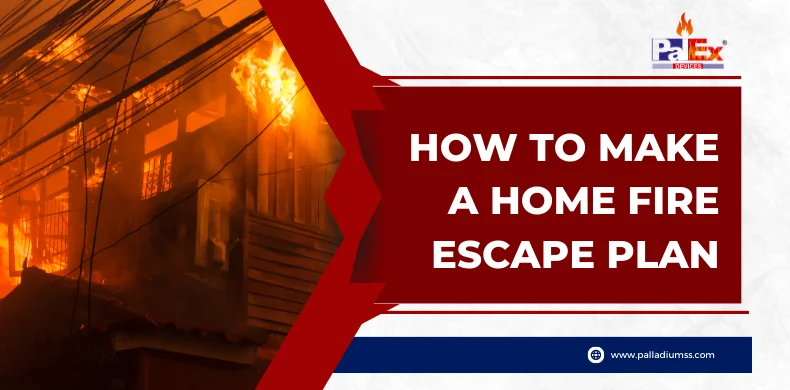
A fire escape plan can help you and your family to get out of your home safely in the event of a fire. It is crucial to have a fire evacuation plan and to practice it so that everyone knows what to do in case of a fire. There are many things to consider when making a fire exit plan. You will need to consider how many exits there are in your home, where they are located, and how you will get to them.
A fire evacuation plan can give you peace of mind knowing that you have a plan in place in an emergency. Many resources are available to help you create a fire emergency evacuation plan. Once you have created your fire escape plan, practice it with your family, so everyone knows what to do during a fire.
Most people never think about their home fire evacuation plan until it’s too late. By then, it’s usually too late to save themselves or their loved ones. A fire emergency evacuation plans a vital to any home safety plan. It should be practised regularly, so everyone in the family knows what to do in the event of a fire.
Here are some tips by Palladium Safety Solutions you can implement and execute during an execution plan.
Some Tips on How to Make and Execute a Home Fire Escape Plan
Fires are one of the most common and deadly disasters that can strike a home. While modern homes are built with many safety features to help prevent fires from starting and contain them, if they do, there is still a risk.
Here are a few tips on how to make and execute a home fire escape plan
Tip 1: Draw a Floor Plan For Your Home
Easy Fire Safety Drawing will help you know your home’s layout and where all the exits are located. It is also a good idea to mark where windows and doors are located.
Tip 2: Choose Two Escape Routes From Each Room
You should have at least two ways to escape from each room in your home. You will have a backup if one route is blocked by fire or smoke.
Tip 3: Choose a Meeting Place Outside
Once you have escaped the home, meeting at a designated spot outside is essential. This will help you account for everyone and ensure everyone is safe.
Tip 4: Practice Your Plan With All Members of Your Household
This is especially important for young children. Everyone should know what to do and where to go in the event of a fire. Practice makes perfect. Everyone knows now what to do when an emergency strikes. A hire fire exit plan is essential to keeping you and your family safe in the event of a fire. By following these tips, you can ensure that you are prepared for anything.
Tip 5: Keep A Copy Of Your Plan In A Convenient Location
Make sure everyone in your household knows where the plan is kept. In an emergency, time is of the essence, and you don’t want to waste any time looking for a plan.
Tip 6: Review And Update Your Plan Regularly
Your home fire escape plan should not be a static document. As your family and your home change, so should your plan. Reviewing and updating your plan regularly will ensure that it is always up-to-date and reflects the current layout of your home. A home fire evacuation plan is critical to keeping your family safe in the event of a fire.
Tip 7: Make Sure Everyone should Know About Emergency Number
This is a lifesaver for you and your family; if anyone in your home sees the fire first, they immediately contact the emergency number to send help as soon as possible to decrease the loss of your belongings.
Tip 8: Everyone Should Have An Idea of Fire Fighting Equipments Maintained
There is one thing you keep in mind that keeps fire fighting equipment like hose reel drums, hose box, sprinklers, and hydrant valve maintained adequately. one more thing, always keep in mind that everyone should know how to use that equipment.
By following these tips, you can ensure that you are prepared for anything.
Points To Remember to Make a Home Fire Emergency Evacuation Plan
There are several things to remember while making a fire emergency evacuation plan. All these points must be kept in mind, and the list is as follows:
- Install smoke detectors and sprinklers on every level of your home and in every bedroom.
- Test your smoke detectors monthly and replace the batteries at least once a year.
- Keep a fire extinguisher in an easily accessible location.
- Never leave burning candles unattended.
- Never leave the kitchen while cooking.
- Don’t overload electrical outlets.
- Store flammable liquids in a cool, dry place.
All In All
Making and regularly practising a home fire escape plan is one of the best things you can do to protect your family in the event of a fire. By following the tips above, you can ensure that you are prepared for anything.
Need Fire Safety Guidance? Contact Palladium Safety Solution Now!
Palladium Safety Solutions is a fire safety company that can provide the guidance you need to ensure your home is safe from fire. We can provide you with a home fire exit plan, help you choose a suitable fire extinguisher, and more. Contact us today to learn more about our services!
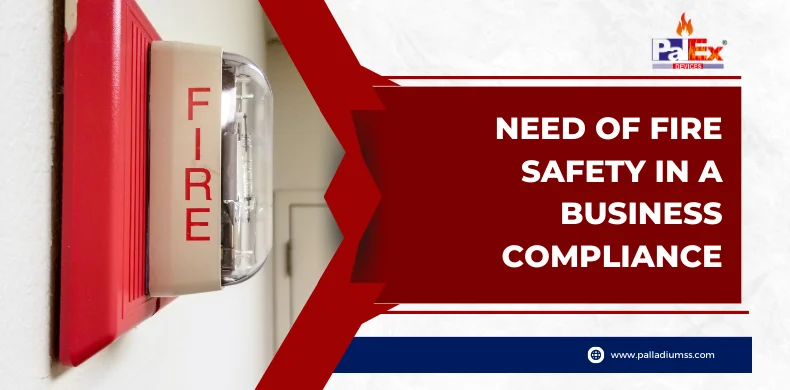
Fire safety is of paramount importance in any building. As a business owner, you are responsible for ensuring that your workplace meets all required health and safety standards. Your work environment must comply with all building regulations to ensure the safety of your employees and the protection of your building.
Fire safety should always be a major concern, no matter what type of business you run or the number of people working. Failure to do so may give your employees the wrong message, as it reflects them that their well-being at work is not always considered, and in some cases, can have disastrous effects in the event of an office fire.
A fire risk assessment should always be carried out by the responsible person with a written record of it if the company employs five or more people. To perform a fire assessment/P>
The following steps must be taken:
- Identification of Potential Fire Hazards – Note anything that could easily cause a fire or combustion, if found during the assessment.
- Identification of People at Risk – Find out if the risk can be higher for some people (i.e., the disabled and the elderly are particularly at risk).
- Act on Results – Assess, reduce or eliminate potential risks.
- Record – Keep a record of results, prepare a contingency plan, and provide fire safety training.
- Review – A fire risk assessment should be carried out regularly with all results, updated, and recorded.
This can be done by the person responsible for fire safety with the help of fire safety risk assessment guidelines. Depending on the type of business, several different guidelines apply to each environment. You can use this fire risk assessment checklist to make sure you cover all the basics.
When you invest in a fire detection system and safety setup for your business, you are investing in people. It improves the health, safety, and well-being of the people associated with you and your company. A safe and healthy work environment is a basic social right. Protecting workers from occupational safety and health risks promotes goodwill besides being human.
Workers have the right to a work environment that suits their professional needs and allows them to prolong their participation in the labor market.
In various fire safety audits, your organization’s fire control panel facilities and activities are evaluated. The prevailing risks and the level of prevention, protection, and emergency management preparedness like fire emergency light are also considered. And then you get a recommendation to update your security entries to avoid accidents and reduce consequences.
Final reports recommend more efficient working methods and techniques. This contributes to a better work-life balance.
You can enhance personal safety through good practice and action. Compliance with rules and regulations. All procedures and controls in place. Accidents will never happen or at least there will be a decrease in the number of accidents. It will improve the morale of the employees. Thus, improving productivity will result in the betterment of the profits.
You will get easier insurance if all necessary systems are in place. After a frequent check is done, it will be easier to get fire insurance from several companies. Also, if a remote fire continues, it will be easier to claim compensation for losses.
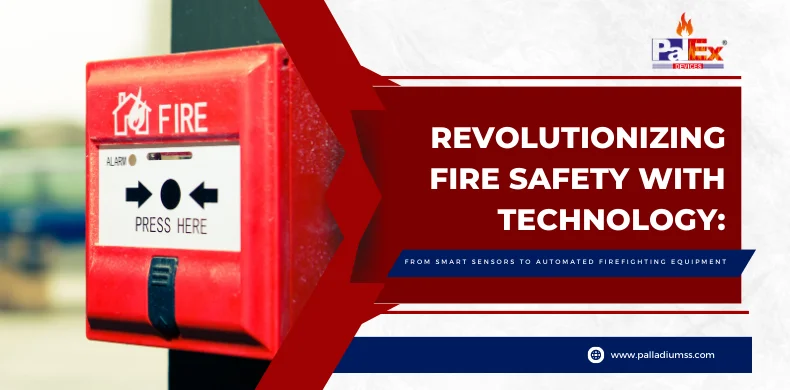
New technology has changed the way we keep safe from fires. It helps us protect ourselves and buildings in new and better ways. Some sensors can find fires early on, and special cameras help firefighters see where the heat is so they can plan better. Special drones with devices that can see heat and detect gas are used to check how big fires are and find places that are difficult to get to. Better gear protects better from heat and flames. Robots and machines that fight fires help better and faster. As technology gets better, we will find new ways to stop, notice, and fight fires. This will make fire safety much better for everyone.
Smart Fire Sensors
s>Thermal Imaging Cameras
Firefighters use special cameras to find hot spots in burning buildings. These cameras are called thermal imaging cameras. These cameras take pictures using heat energy and turn them into a picture that people can see. This tool helps firefighters to see in smoky and dark conditions. They can find hidden places that are hot and might cause problems.
Drones
Drones help firefighters see fires from the sky and find dangerous spots and gases. This makes their work better. This tool helps firefighters see how far the fire has gone, find hidden fire, and reach hard-to-reach fire to put it out. It helps make firefighting better.
Advanced Protective Gear
New fabric technology has greatly improved protective clothing. Nowadays, firefighters have better clothes to protect them from high heat and flames than before. These new suits can resist even higher temperatures and give them better protection. This made firefighters safer and better at fighting fires.
Automated Firefighting Equipment
Machines that fight fires are getting better and faster at putting out fires, which helps save more lives and property. Drones and robots to stop fires are being made to go where people can’t, so firefighters can stay safe and do a better job. Soon, these tools will change how firefighters work.
New technology for firefighting is making fires safer. Numerous thoughts are still being created. As the world keeps making modern innovations, we’ll discover better approaches to halt, discover, and battle fires. Numerous thoughts are still being created. As the world keeps making modern innovations, we’ll discover better approaches to halt, discover, and battle fires.
Conclusion
To sum up, the future of keeping safe from fire is here and it’s really interesting. New machines and tools help us prevent fires and keep everyone more protected. firefighters now possess improved equipment such as intelligent sensors and upgraded firefighting gear that enables them to safeguard individuals and possessions more efficiently. As technology advances, novel methods to avert fires and ensure the safety of individuals and structures will emerge. Fire safety will improve in the future, offering us enhanced protection against fires.
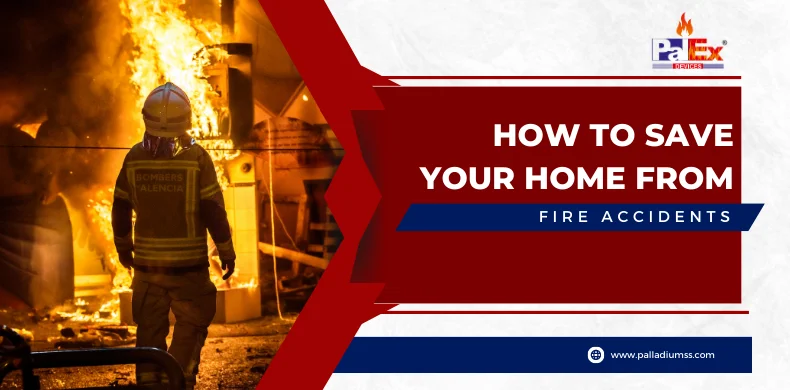
Your home is undoubtedly where your heart is, and you are sure to go to any cost to protect it and its residents, your loved ones, from any danger. Mishaps like fire breakouts can occur anytime and leave you with no time to react than you may imagine. Whether it is from a gas leakage or a careless activity of lit-up cigars, a fire at home can destroy everything in a matter of seconds.
Here are some points that must be followed to prevent your Home from fire and flames :
Install a Smoke Detector System in your Home
Smoke detectors come in extremely handy in case of a fire. Ideally, smoke detectors should be set up in every room of your house and test whether they are functioning correctly every month. The smoke detector uses the battery to give a beep. Sometimes, the smoke detector system doesn’t give a beep as it runs out of battery, so it is advisable to check them once a month and change the batteries at least once in six months.
Install Fire Extinguisher in your Home
Some houses are equipped with fire sprinkler systems, but installing
fire extinguishers at home is the next best thing to prevent fire tragedy. It is essential to keep
fire safety equipment like a fire extinguisher in the kitchen and others near the areas like a fireplace for fire safety. Remember to put the fire extinguishers far away from the potential fire source so you can grab them safely without getting too close to the fireplace. Regularly review the fire extinguisher and ensure all house members know how to use the extinguisher properly.
Prevent overheating of Running Electrical Appliances
Electrical appliances like electrical rods, inverters, geysers, television, hair dryers, etc., can be overheated. If not turned off after use. Hence, keep in mind to turn them off after using these devices. If these appliances are heating up quickly for no apparent reason, immediately replace them.
Store Flammable Materials in the Proper Place
Keep flammable materials like kerosene oil, matchboxes, perfumes, pesticides, etc., in a safe and appropriate place in your house, possibly in cool areas where there is no direct sunlight. You should ensure that these storages are out of reach from small children and pets at your home.
Check Cable connections Regularly
The most destructive fires are caused due to short-circuits in the system or faulty wires. Excessive cluttering of wires or obsolete materials increases the chances of fire. Therefore, it’s better to check your house wiring at regular intervals, and if there is any torn wire, immediately replace it with the new one that should be fire retardant. You can inspect cable connections by yourself or call an electrical engineer to check the wiring of your house.
Always Set up an Exit plan in your Building
An Exit plan must be made for proper exit from your house in case of fire. If you need to learn how to make an exit plan, You can take help from a fire safety officer. Once the exit plan is created, try it once and ensure that every member of the family must be familiar with that plan. Also, decide a familiar spot outside the building where all of you can gather after escaping the violent flames.
Practice Fire Habits
Fire can be caused by any reason, but one should be aware of how to handle it. Develop Fire Habits to prevent fire, and you should respond immediately if there is a fire breakout.
Deploy a Hypoxic Air-Fire Prevention System
Hypoxic air-fire prevention is one of the advanced fire-fighting techniques. It reduces the volume of air in that particular area. Hence an insufficient amount of oxygen causes less fire spread and suppresses it. This way, the damage taken will be much less than the other fire-fighting technique.
Conclusion
We all know the destructive power of flames and always be cautious while doing such actions involving the risk of a fire breakout. Above mentioned points are some significant contributors to a fire breakout. Keep this in mind while handling these things, and being cautious as a family member should be safe from any fire mishap.

